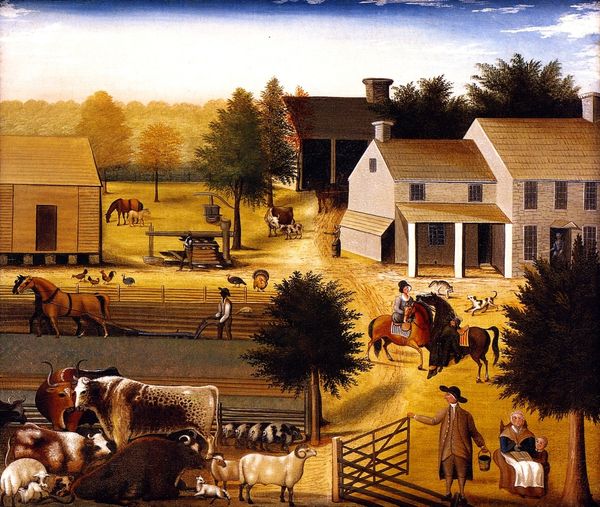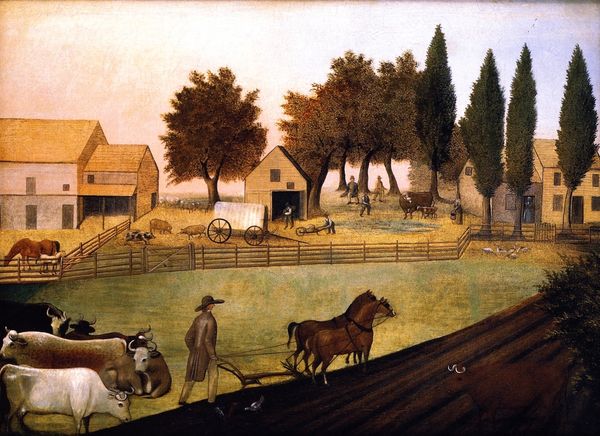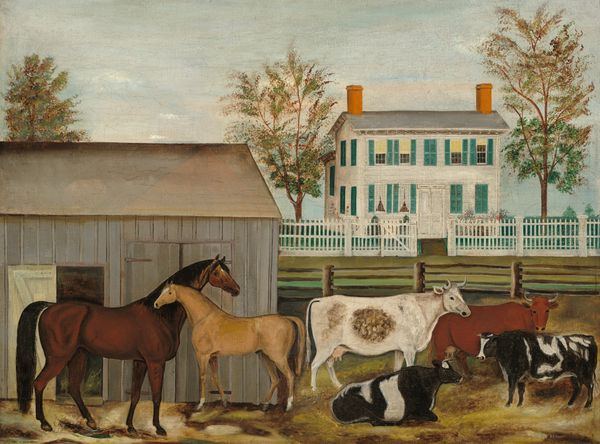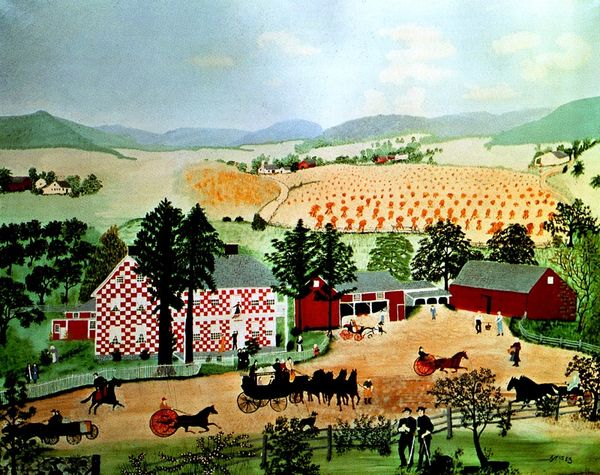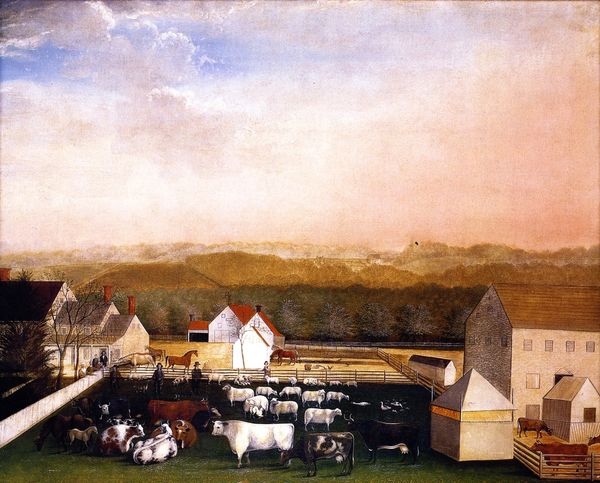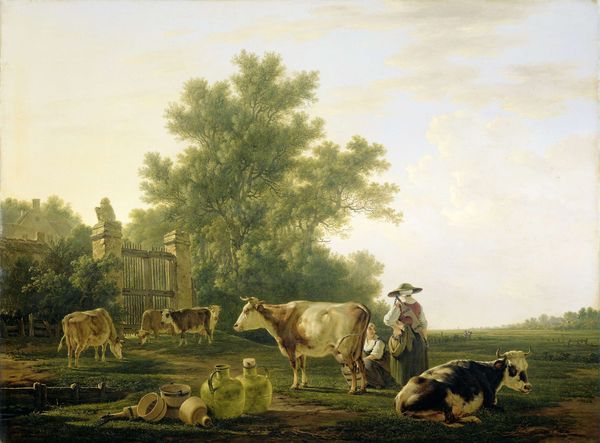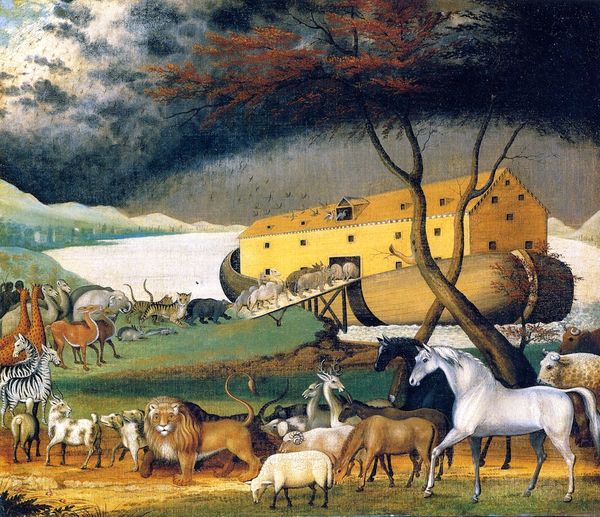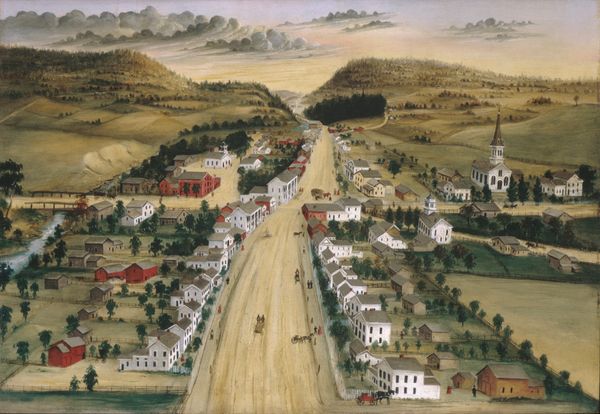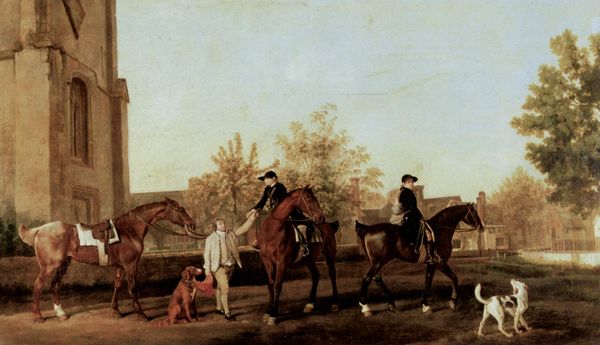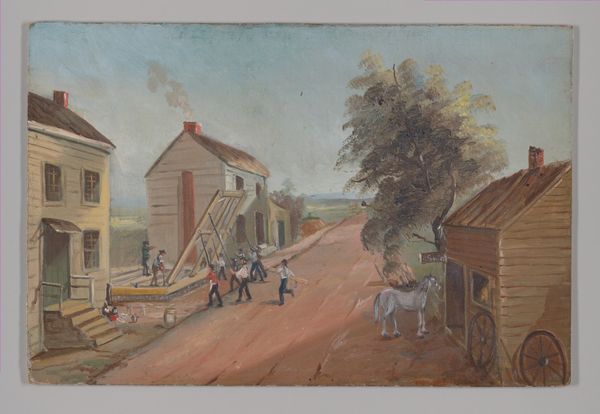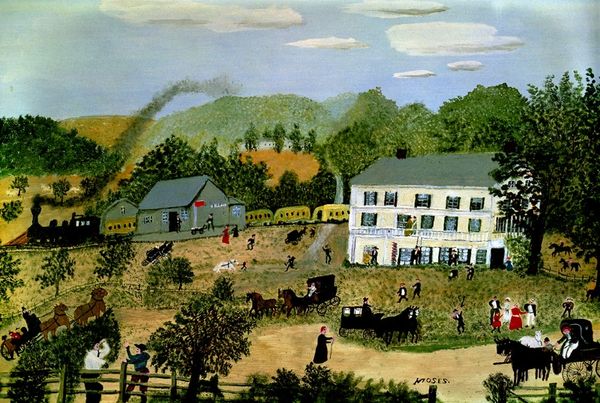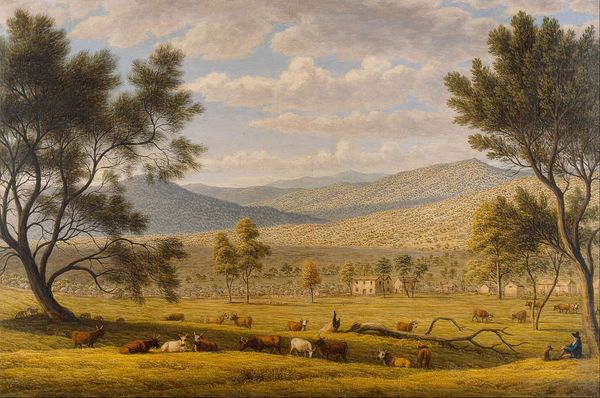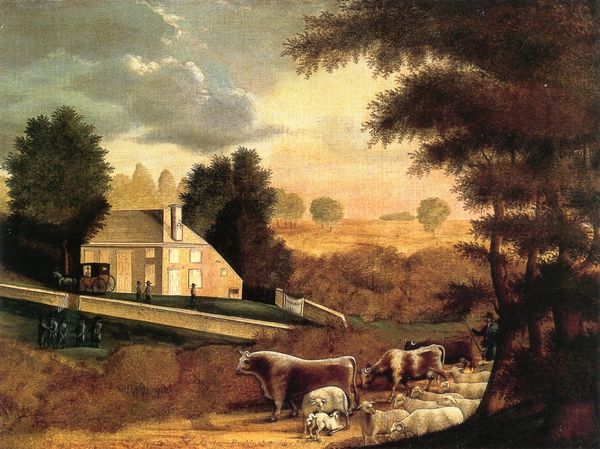
painting, oil-paint
#
rural-area
#
painting
#
oil-paint
#
landscape
#
oil painting
#
green background
#
painting painterly
#
genre-painting
#
impressionist inspired
#
realism
Copyright: Public domain
Editor: This is "An Indian Summer View of the Farm & Stock of James C. Cornell," painted in 1848 by Edward Hicks. It's an oil painting depicting a rather idyllic rural scene, filled with livestock. There's a strange sense of stillness and formality to it all. How do you interpret this work? Curator: Well, given Hicks's background as a Quaker minister and his focus on peaceable kingdoms, we need to consider the cultural context of 19th-century America. This wasn't just a picturesque landscape. The painting speaks to the ideals of agrarian life, prosperity, and community harmony that were central to the American identity at that time. Editor: So, the painting’s reflecting aspirational values of its time? Curator: Precisely! Look at the precise rendering of the animals, almost like a catalog, showcasing the bounty of Cornell's farm. Consider how that ideal may have been contrasted to social and economic changes as well, reflecting tensions between agrarian values and growing industrialization, not to mention social hierarchies, that played out in society at the time. Editor: That makes sense. So, it's not just about a farm, but about a particular vision of America that might have excluded many? Curator: Exactly. Who had access to this pastoral vision? Whose labor built it? Hicks' painting can serve as a point of departure to examine the social narratives constructed in art and how those visuals can carry complex and often contradictory messages. Editor: It is a lot to unpack, much more than just cows! Curator: And that’s where history gives nuance to visual experience. It allows you to view the painting through multiple perspectives of the social structures that shaped both its creation and our interpretation.
Comments
No comments
Be the first to comment and join the conversation on the ultimate creative platform.

